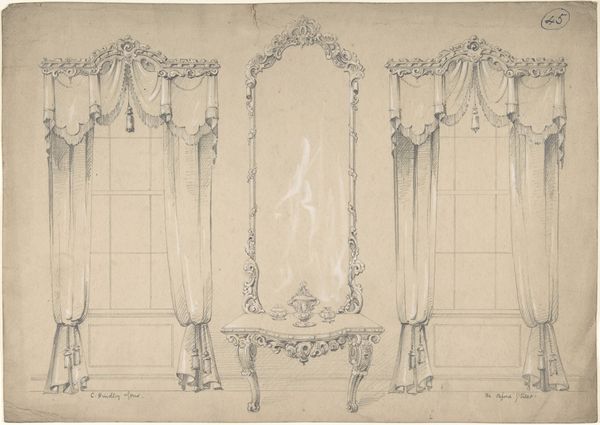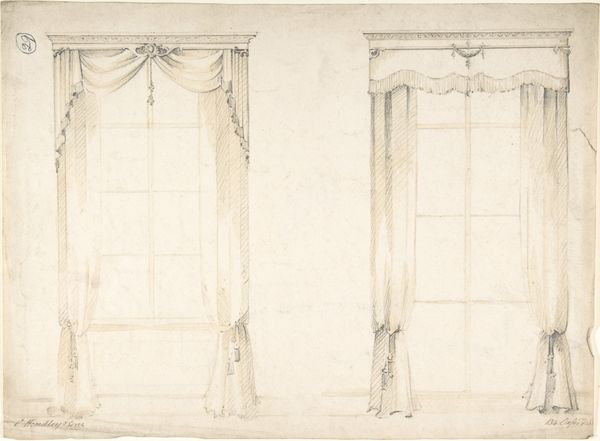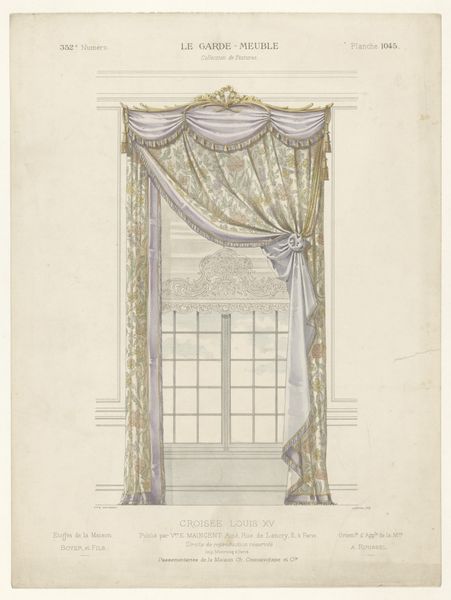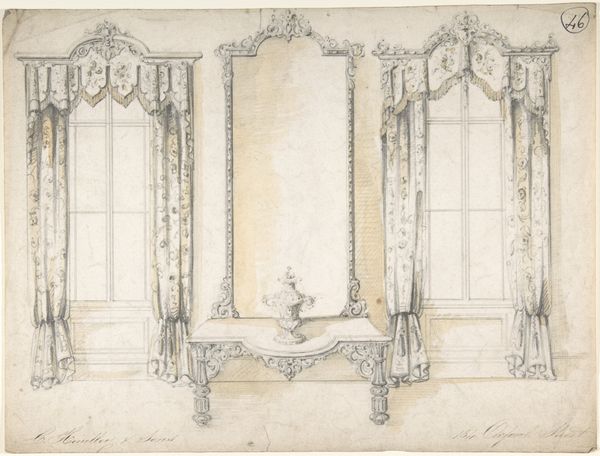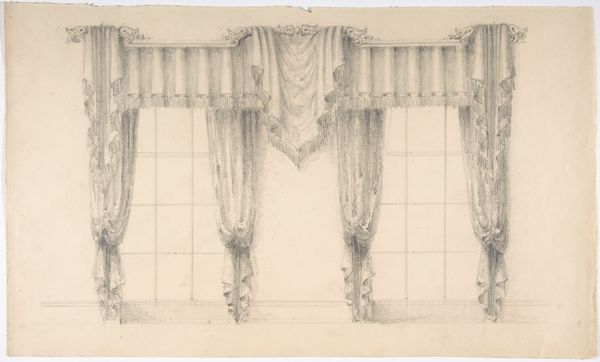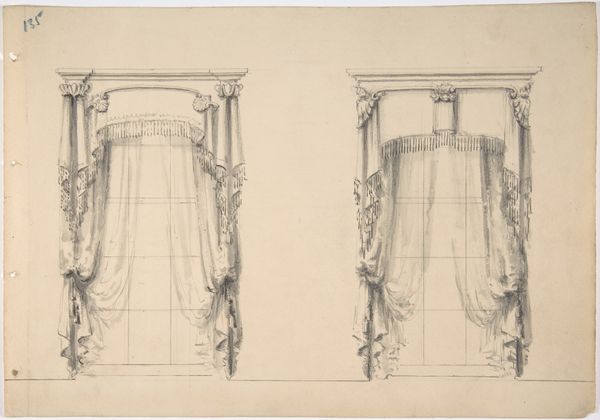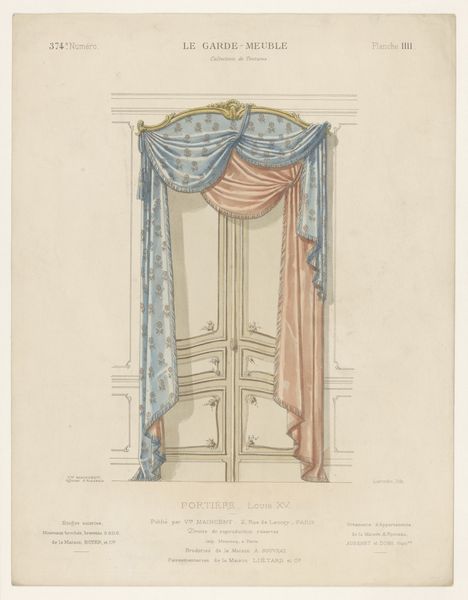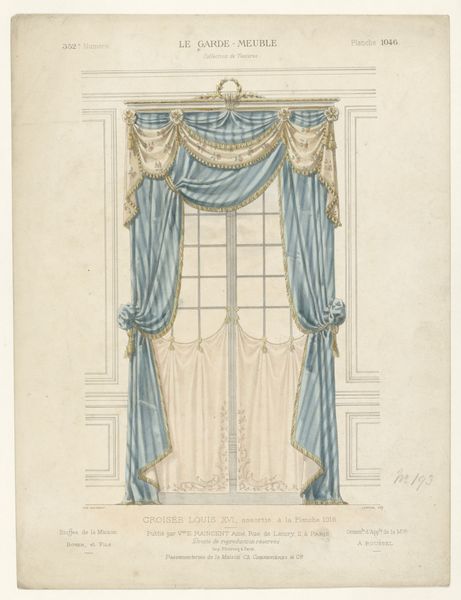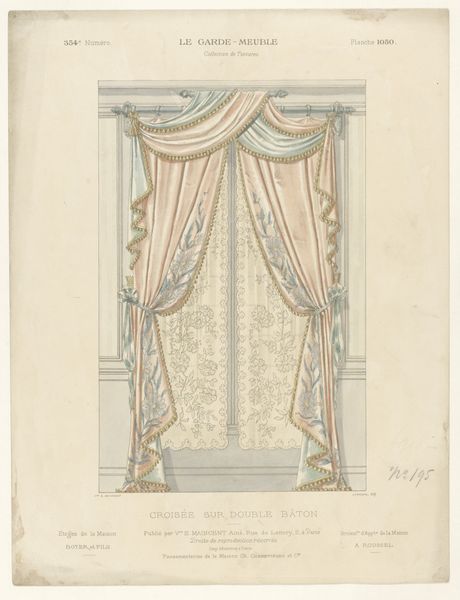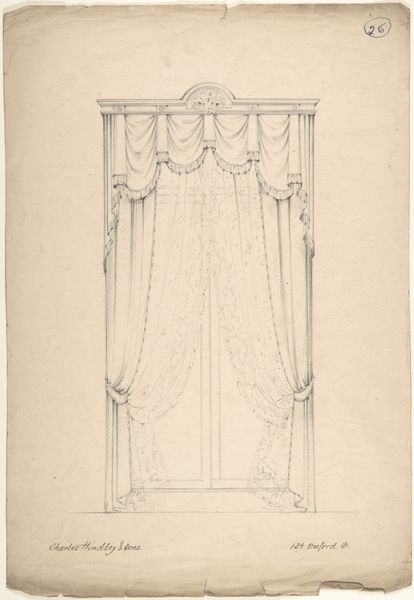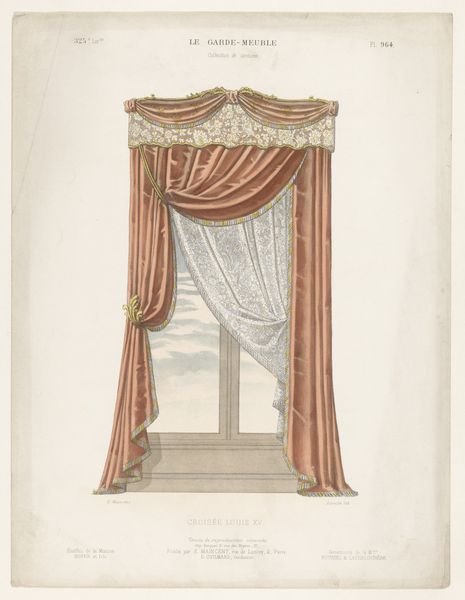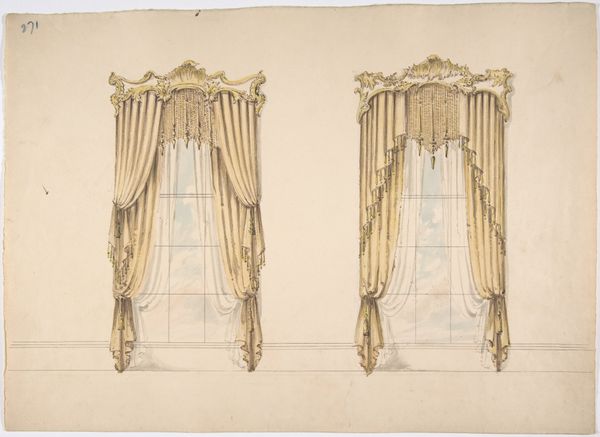
drawing, print, pencil
#
drawing
# print
#
form
#
pencil
#
line
Dimensions: sheet: 11 5/16 x 13 7/16 in. (28.7 x 34.1 cm)
Copyright: Public Domain
Curator: Here we have a “Design for Curtains and Rod” produced between 1841 and 1884, attributed to Charles Hindley and Sons. It is currently part of the collection at the Metropolitan Museum of Art. Editor: My initial feeling? Dreamy! It's like looking at a ghost of elegance, a half-remembered drawing from a period drama. The light and shadows are doing a real dance, like memories fading and resurfacing. Curator: The drawing offers an intimate look into Victorian aesthetics, and beyond this, one cannot neglect that it showcases how domestic spaces were meticulously planned and controlled by powerful design. Here the ornamental is central. We may even want to look closer into the gender dynamics this suggests. Editor: Absolutely! And thinking about the curtains themselves, I wonder, were they meant to shut out the world or frame it? Do they want to conceal or present something with flourish and drama? It feels like both/and. Curator: In Victorian society, such details served multiple functions. Curtains controlled light, ensured privacy—important as social reform movements advocated for domestic privacy. More obviously perhaps, they showcased wealth and taste and drew stark lines according to status and power, quite literally ‘drawing the line’ through architectural textiles. Editor: I also can’t help but think of the hidden labors and supply chains behind all of this. Someone spent ages sketching it, planning, choosing fabrics. And artisans were hired and paid-- or maybe, underpaid and exploited-- to bring these sketches into reality, with very possible different artistic views or approaches! The design itself carries the echoes of unseen hands. Curator: Precisely. It invites consideration of social inequities related to gendered work roles and access to material culture. Whose labor is valued? Who dictates aesthetic standards? Editor: Yes, questions on top of questions... Maybe that is exactly where its evocative and lingering quality comes from; like these ghost curtains it evokes un-definitive, complicated matters. It seems to tell its history and secrets but only halfway; it just allows a mere glimpse of a deeper story. Curator: Ultimately, “Design for Curtains and Rod” offers a complex lens through which to consider intersections of gender, class, and the performance of taste in the Victorian era. Editor: Right, It definitely makes me reconsider something I often take for granted – the history embedded within the very fabric—no pun intended—of our designed environments.
Comments
No comments
Be the first to comment and join the conversation on the ultimate creative platform.
